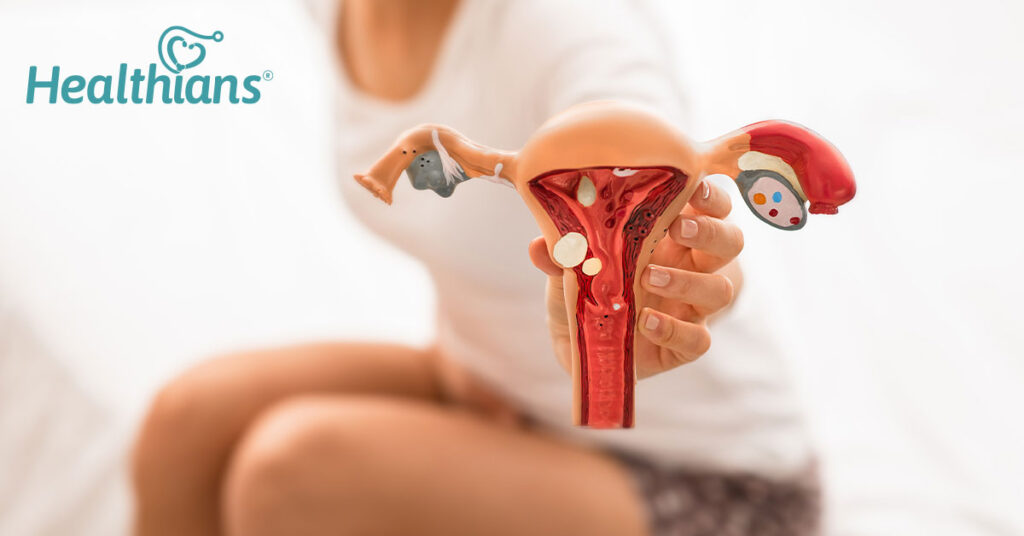Introduction
Endometriosis (en-doe-me-tree-O-sis), sometimes called ‘endo,’ is a painful medical disorder of the female reproductive system in which the tissue that normally lines the inside of the uterus begins to grow outside of it. This tissue growth can affect the ovaries, fallopian tubes, and other pelvic organs. Endometriosis is one of the most common gynaecological conditions, affecting one in every ten women of reproductive age.
Common symptoms include:
· Pelvic pain
· Painful periods (dysmenorrhea)
· Pain during or after sex
· Pain with bowel movements or urination
· Abnormal or heavy menstruation
· Infertility
Pain from endometriosis can range from mild to severe. It may be either intermittent or continuous. It may start before and last throughout the menstrual cycle, or it may peak at certain times of the month.
Although endometriosis is a chronic condition, with proper treatment, most women can manage their symptoms and live a normal, healthy life.
While there is no cure, treatments are available to relieve pain and other symptoms. Exercise is one of the most effective ways to manage endometriosis pain. The most important thing to remember when dealing with endometriosis is to listen to your body. Exercise should not cause pain, and should be stopped immediately if it does. It is critical to begin slowly and gradually increase intensity over time.
5 Best exercises to relieve pain
1. Yoga:
Research suggests that yoga is a great way to relieve pain associated with endometriosis. It helps to improve flexibility, reduce stress, and improve posture. Yoga can help reduce pain and inflammation associated with endometriosis, by stretching and strengthening the muscles and improving blood flow. Strengthening the muscles can help support the body and reduce the strain put on the joints. Improved blood flow helps to reduce inflammation and can help to reduce pain. Additionally, using yoga as an aspect of a holistic treatment plan for endometriosis. It can also help to calm the mind, which can help to reduce stress, tension, and ultimately pain. Having said that, it is important to note that yoga can only help manage the pain caused by endo — not eliminate the condition itself.
2. Pilates:
Pilates is an excellent form of exercise for endometriosis sufferers. It is a form of exercise that focuses on the diaphragm, transverse, multi-fundus, and pelvic floor muscles. Pilates workout not only helps burn calories, but also helps reduce pain from endometriosis. The workout helps to strengthen the deeper transverse abdominal and pelvic floor muscles. Strengthening these muscles helps to reduce back pain by stretching the tight muscles in the back that are causing your pain. Additionally, Pilates can help increase flexibility and range of motion, while also improving circulation and relaxation.
3. Tai Chi
According to some studies, tai chi can reduce pain and improve a wide range of motion. Tai chi is a type of exercise that entails a series of slow, graceful, controlled body movements. Tai Chi’s physical movements provide amazing health benefits for those suffering from the symptoms of endo. Regular practice builds help to reduce endometriosis pain by improving circulation and increasing the body’s flexibility and range of motion. The non-invasive technique also aids in the reduction of muscle tension, and the increase of relaxation. Furthermore, it is a more soothing approach to diminishing endometriosis since it helps to reduce anxiety and depression, which are common endometriosis symptoms.
4. Stretching:
Stretching is an integral feature of any exercise routine, and it can be a fantastic way to self-manage some of your symptoms of endometriosis. Stretching can aid in the reduction of inflammation, the improvement of flexibility and range of motion, and the relaxation of tense muscles. In order to manage pelvic discomfort associated with the condition, stretches that concentrate on the muscles of the pelvic area, low back, and/or lower limbs can be quite beneficial. It can be part of a multi-pronged strategy to increase circulation, relax tight muscles, and improve flexibility, which can aid in the reduction of stiffness associated with endometriosis.
5. Walking:
Walking is the best exercise for endometriosis. There are several ways that walking might ease endometriosis discomfort. It boosts endorphins, which are happy hormones that serve as natural painkillers and reduce the discomfort brought on by endometriosis. Walking can also enhance circulation and assist in reducing inflammation, which can alleviate the pain associated with endometriosis.
Final Thoughts
In conclusion, when you’re experiencing pelvic pain and cramping, exercise may seem like the last thing you want to do, but staying active may help relieve endometriosis symptoms. It’s critical to find a workout that appeals to you and that you can do comfortably, and to discuss it with your doctor. Your doctor can tell you if you’re on the right track with a safe exercise regimen that won’t exacerbate endometriosis symptoms like pelvic pain.





